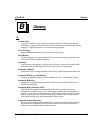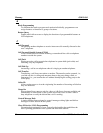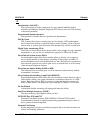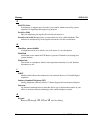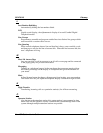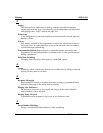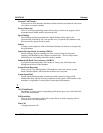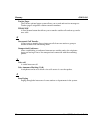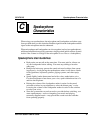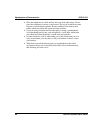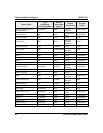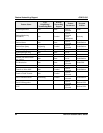
Speakerphone
Characteristics
When using your speakerphone, the microphone and loudspeaker are farther away
from you than when you use a handset. Both thesignal from the loudspeaker and the
signal to the microphone must be enhanced.
Whenmicrophones and loudspeakersare close together(such as in aspeakerphone),
additional amplification typically generates aringing sound (public address systems
do this if the volume is too high or the microphone is too close to a loudspeaker).
Speakerphone User Guidelines
· Both parties can not talk at the same time. You must wait for silence out
of your loudspeaker before talking. You must stop talking to hear the
other party.
· Background noise may prevent the sound-activated switches from operat-
ing properly. Avoid placing the speakerphone where it will detect sounds
from typewriters, keyboards, printers, paging systems, and other equip-
ment.
· Speak slightly louder than normal and with a clear, authoritative voice.
For the microphone to best detect your voice, speak within three feet of it
and face the telephone.
·
Raising the volume of the loudspeaker makes it easier for the sound-
activated switches in your telephone to select the distant party’s voice.
Lowering the volume of the loudspeaker makes it easier for the switches
to select your voice.
·
Since the system takes several seconds to provide the best switching, con
-
stant sound patterns—such as elongating your words and playing
externally-supplied music—may prevent the sound-activated switches
from operating properly.
Non-LCD Station User’s Guide 87
GCA70-313 Speakerphone Characteristics
C



